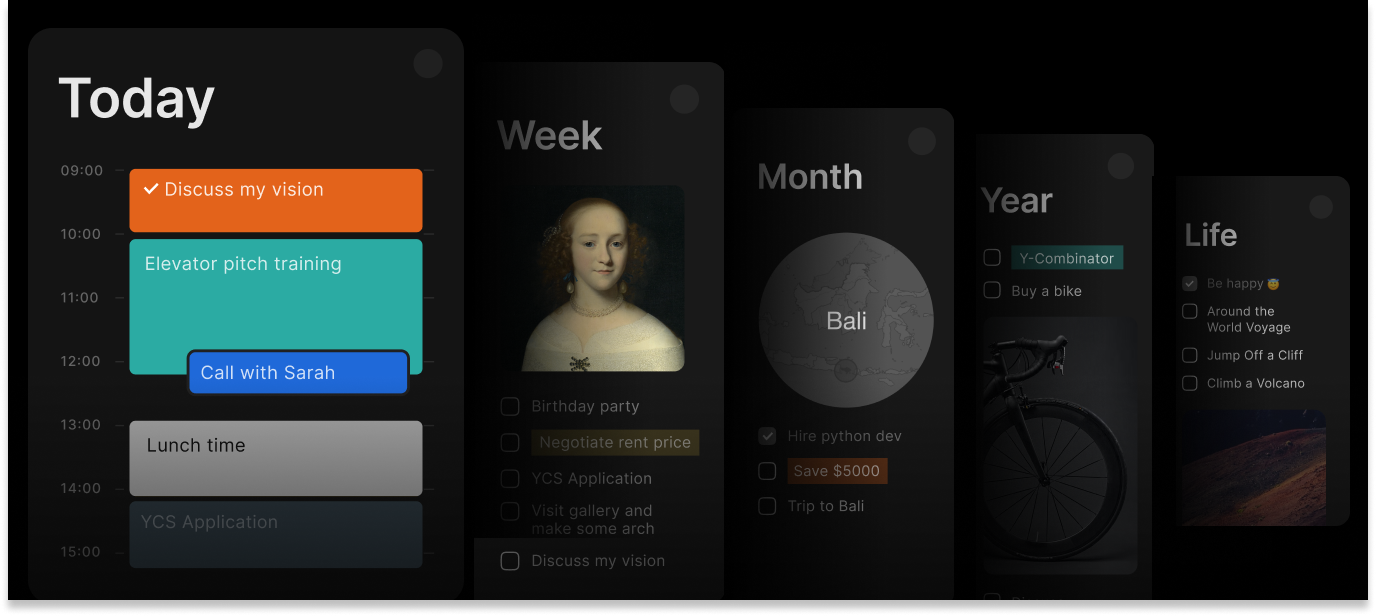The Pomodoro Technique: Master Your Time and Boost Productivity

Ever find yourself staring at a blank page or scrolling through your phone when you should be working? You’re definitely not alone. Lots of people are asking what is the Pomodoro technique these days, and honestly, it’s worth knowing about. The Pomodoro Technique isn’t some fancy productivity hack that requires a PhD to understand - it’s actually pretty straightforward and surprisingly effective.
So what is the Pomodoro method exactly? Think of it as chopping up your work into bite-sized chunks with built-in breaks. Many students wonder what is a pomodoro when they first hear about it, and the pomodoro study method has become their go-to approach for tackling everything from homework to exam prep. The pomodoro meaning comes from the Italian word for tomato, which might sound random until you learn it started with a tomato-shaped kitchen timer.
Whether someone’s trying out the pomodoro study technique or figuring out how to use the pomodoro technique for studying, the basic idea stays the same - work hard for short bursts, then take a breather. The pomodoro method study approach has helped tons of people who used to struggle with focus and getting things done. Still wondering whats pomodoro all about or trying to wrap your head around what is pomodoro method in real terms? The beauty of the pomodoro method lies in its simplicity - anyone can try it without special tools or training. It works as a solid pomodoro strategy for pretty much any type of work, and the pomodoro study approach has especially caught on with students and anyone who needs to power through mentally demanding tasks. The pomodoro method has genuinely changed how people tackle their daily workload, making overwhelming projects feel much more manageable.

What’s All the Fuss About This Tomato Timer?
So you’ve probably heard people talking about the Pomodoro Technique, right? It’s one of those productivity methods that sounds almost too simple to work. The basic idea is pretty straightforward: work for 25 minutes, take a 5-minute break, rinse and repeat. That’s it. No complex systems, no fancy apps required (though they can help), just focused work sessions followed by quick breathers.
The beauty of this approach lies in how it tricks your brain into cooperation. Instead of staring at a mountain of work and feeling overwhelmed, you’re just committing to 25 minutes. Most people can handle anything for 25 minutes, even the most boring spreadsheet or the most challenging project. It’s like psychological judo – using your brain’s natural tendencies to your advantage rather than fighting against them.
There’s something refreshing about how this technique emerged from such humble beginnings. No fancy research lab or corporate think tank – just a stressed-out student with a kitchen timer shaped like a tomato. Sometimes the best solutions really are the simplest ones.
Breaking Down the Process
The mechanics couldn’t be more straightforward, though the simplicity is deceptive. Here’s how it unfolds:
Pick your target
Choose one specific task you want to tackle. Not “work on the project” but something concrete like “write the introduction section” or “organize the budget spreadsheet.”
Set the countdown
Twenty-five minutes on the timer, and you’re off to the races.
Dive in completely
This is where the magic happens. For those 25 minutes, that task gets your full attention. No quick email checks, no social media scrolling, no “just one tiny thing” detours.
Honor the break
When the timer rings, stop what you’re doing. Even if you’re in the middle of a brilliant thought, step away. This discipline is crucial.
Repeat the cycle
Do this four times, then reward yourself with a longer break of 15-30 minutes.
The real challenge isn’t the work itself – it’s maintaining that single-minded focus. Modern life has trained most of us to be constant multitaskers, so concentrating on just one thing can feel almost unnatural at first. But that’s exactly why it works so well.
The Accidental Discovery
The origin story behind this technique is wonderfully relatable. Picture this: late 1980s, Francesco Cirillo is a university student in Italy, struggling with the same problem that plagues students everywhere – total inability to focus. Sound familiar? He’d sit down to study and within minutes find himself daydreaming, doodling, or doing literally anything except the task at hand.
Rather than accepting this as his fate, Cirillo decided to experiment. He grabbed a tomato-shaped kitchen timer (because that’s what was available) and made a deal with himself: study for just 10 minutes without getting distracted. Just 10 minutes. When he succeeded, he gradually increased the time until he discovered that 25 minutes hit the sweet spot.
What started as one desperate student’s personal hack gradually evolved into a full methodology. Cirillo spent years refining the approach throughout the 1990s before sharing it with the world in 2006. The fact that it resonated with millions of people suggests he was onto something fundamental about how human attention actually works.
The technique’s popularity isn’t just about clever marketing – it aligns beautifully with what cognitive scientists have discovered about focus, attention spans, and mental fatigue. Sometimes practical wisdom and scientific research arrive at the same conclusions independently.
Why This Simple Approach Actually Delivers
Several psychological mechanisms make the Pomodoro Technique surprisingly effective:
- The deadline effect kicks in when you know you only have 25 minutes. There’s something about that ticking clock that sharpens focus and eliminates dawdling. It’s like having a mini-deadline that keeps you honest.
- Mental fatigue management happens naturally with regular breaks. Your brain needs periodic rest just like your muscles do during exercise. Those short breaks prevent the mental exhaustion that leads to diminishing returns.
- Forced single-tasking goes against modern habits but aligns with how the brain actually works best. Research consistently shows that multitasking is mostly an illusion – what feels like doing multiple things simultaneously is actually rapid task-switching that reduces both quality and efficiency.
- Momentum building occurs as each completed session provides a small sense of accomplishment. These mini-victories accumulate throughout the day, creating positive momentum that makes the next session feel more achievable.
- Distraction containment becomes manageable when you can tell yourself “not now, but later.” Instead of losing thoughts or breaking focus, you quickly jot down distractions to address during breaks.
The Unexpected Benefits
The advantages extend far beyond just getting more done:
- Sharper concentration develops over time. Working in focused bursts actually trains your attention span like a muscle. Many people find their ability to concentrate improves even outside of structured pomodoro sessions.
- Reduced procrastination happens because the commitment feels manageable. Even the most daunting project becomes approachable when you’re only promising to work on it for 25 minutes.
- Better time awareness develops as you track how long different tasks actually take. Most people are terrible at estimating time requirements, but using pomodoros provides concrete data that improves planning accuracy.
- Sustainable energy results from regular breaks. Instead of working until exhaustion, you maintain steady productivity throughout the day. Many people report feeling more energized rather than drained.
- Clearer boundaries between work and rest become easier to maintain. This is especially valuable for remote workers or anyone who struggles with work-life balance.
- Visible progress through completed pomodoros provides tangible proof of productivity. There’s something satisfying about counting finished sessions that pure time-tracking doesn’t provide.
Getting Started with the Right Tools
While you can use any timer, having the right setup makes the technique much more effective. This is where Timestripe shines. Rather than just timing your sessions, you can organize focused work sessions around specific projects or goals, keeping everything connected to your bigger picture. You can track completed pomodoros to understand your productivity patterns and identify your most effective times of day. You can prioritize tasks so you’re always working on what matters most during your focused sessions, visualize progress through timeline features that show how your daily efforts connect to longer-term objectives, plan sessions in advance to build consistency and ensure you’re always ready to dive into meaningful work, and schedule breaks as intentionally as work sessions, preventing the common mistake of skipping rest periods.
The key advantage of using a dedicated tool is that it keeps the technique integrated with your broader productivity system rather than existing as an isolated practice.Ready to jump right in? Grab this ready-made Pomodoro board template that walks you through the technique step-by-step, complete with a practical example showing how to prepare for a test using pomodoro cycles. It’s the fastest way to go from reading about the technique to actually using it today.
Making Each Session Count
Common Pitfalls to Avoid
Even with such a simple technique, there are ways to sabotage your success.
- Skipping breaks might seem like a way to get more done, but it actually backfires. The breaks are essential for maintaining focus and preventing burnout throughout the day.
- Allowing interruptions defeats the entire purpose. Learn to politely defer non-urgent requests or quickly jot down thoughts for later attention.
- Choosing unsuitable tasks can lead to frustration. Some creative work or deep thinking might need longer, uninterrupted periods than 25 minutes provides.
- Perfectionism can turn productive sessions into stress-inducing marathons. The goal is progress, not perfection within each pomodoro.
- Inconsistent application won’t give you the full benefits. Like any habit, the technique works best when used regularly rather than sporadically.
- Mismatched timing with your natural work style can create unnecessary struggle. Some people need longer periods to reach deep focus, while others work better with shorter bursts.
- Multitasking during sessions completely undermines the technique’s core principle. The whole point is sustained focus on one thing at a time.
Combining with Other Productivity Methods
The pomodoro approach plays well with other systems.
Getting Things Done (GTD) can handle task organization while pomodoros handle execution.
Eisenhower Matrix prioritization can determine which tasks deserve your focused pomodoro sessions.
Time blocking can set aside specific periods for different types of work, with pomodoros providing structure within those blocks.
Habit stacking can link pomodoro sessions to existing routines, making them more automatic.
Measuring Your Progress
Tracking success helps optimize the technique for your specific situation:
- Daily session counts reveal patterns and help set realistic goals
- Task completion rates show how well you’re estimating time requirements
- Focus quality ratings for each session help identify what helps or hurts concentration
Ready to Transform Your Productivity?
The Pomodoro Technique offers a scientifically-backed, practical approach to time management that can genuinely change how you work. By breaking tasks into focused 25-minute intervals, you can maintain better concentration, reduce procrastination, and accomplish more while feeling less stressed.
What makes it so appealing is its accessibility – anyone can try it without special training or expensive tools. At the same time, it’s flexible enough to adapt to different work styles and needs. Whether you’re a student preparing for exams, a professional juggling multiple projects, or a creative working on artistic endeavors, the Pomodoro Technique can help optimize focus and achieve goals.
The combination of structured focus and regular breaks creates a sustainable approach to productivity that works with your brain’s natural tendencies rather than against them. Try implementing the technique with Timestripe to organize your sessions, track progress, and stay motivated as you build better work habits.
Read next

Try Timestripe today!
Sometimes the most powerful changes come from the simplest adjustments to how you approach your work.
Get Started

